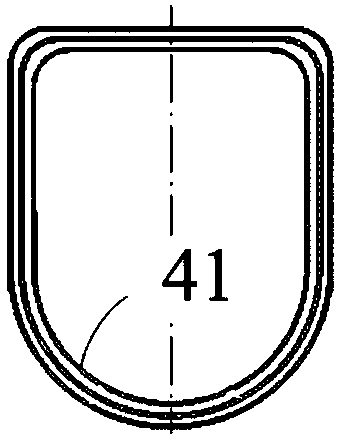Railway crane
A crane and railway technology, applied in the direction of cranes, etc., can solve the problems of high-speed return, small load, heavy return shaft, etc., to meet the rescue requirements, reduce the return shaft weight, and increase the contact area.
- Summary
- Abstract
- Description
- Claims
- Application Information
AI Technical Summary
Problems solved by technology
Method used
Image
Examples
Embodiment Construction
[0052] In order to enable those skilled in the art to better understand the technical solution of the present invention, the present invention will be further described in detail below in conjunction with the accompanying drawings and specific embodiments.
[0053] Please refer to Figure 1-9 , figure 1 It is a structural schematic diagram of a railway crane according to an embodiment of the present invention; figure 2 yes figure 1 Sectional view of the boom with load-bearing area in ; image 3 yes figure 1 Schematic diagram of the installation structure of the support mechanism and the chassis in ; Figure 4 yes image 3 top view of Figure 5 yes figure 1 Schematic diagram of the structure of the middle main leg; Figure 6 yes Figure 5 top view of Figure 7 yes figure 1 Schematic diagram of the structure of the medium and heavy iron telescopic arm; Figure 8 It is a structural schematic diagram of a railway crane equipped with an auxiliary support frame in an em...
PUM
 Login to View More
Login to View More Abstract
Description
Claims
Application Information
 Login to View More
Login to View More - R&D
- Intellectual Property
- Life Sciences
- Materials
- Tech Scout
- Unparalleled Data Quality
- Higher Quality Content
- 60% Fewer Hallucinations
Browse by: Latest US Patents, China's latest patents, Technical Efficacy Thesaurus, Application Domain, Technology Topic, Popular Technical Reports.
© 2025 PatSnap. All rights reserved.Legal|Privacy policy|Modern Slavery Act Transparency Statement|Sitemap|About US| Contact US: help@patsnap.com



